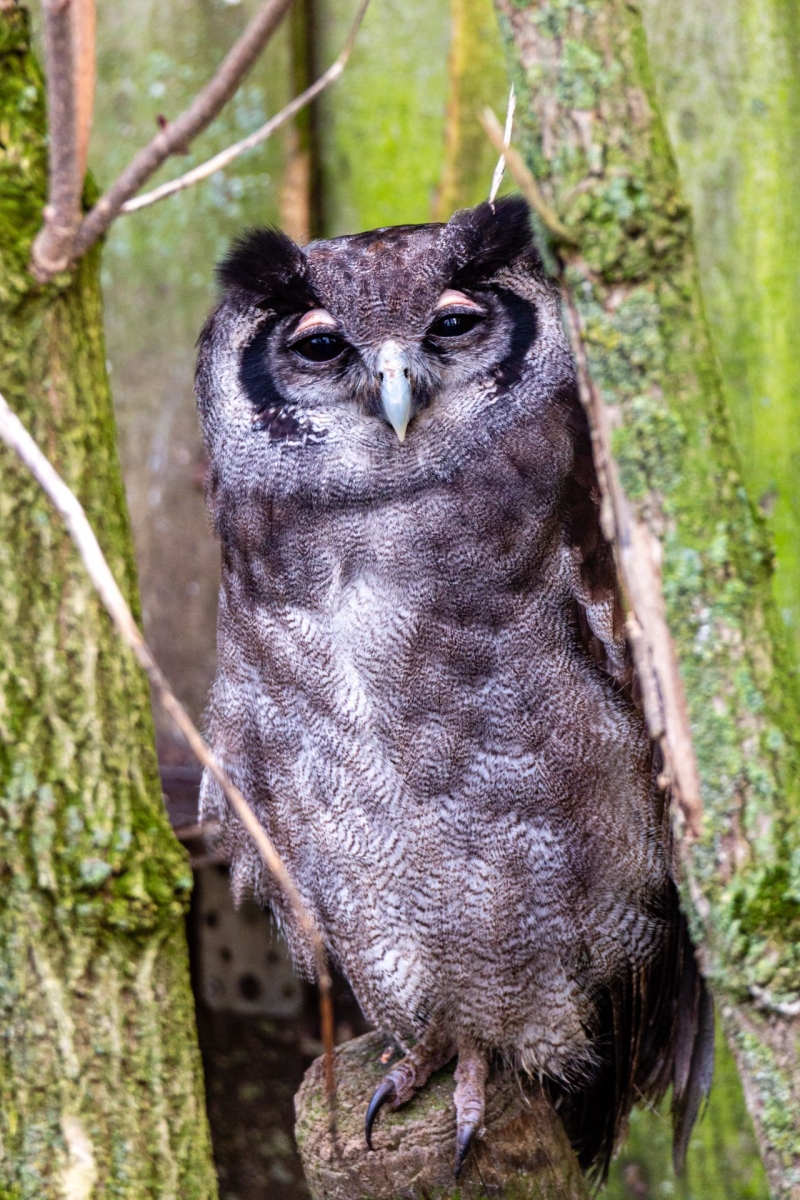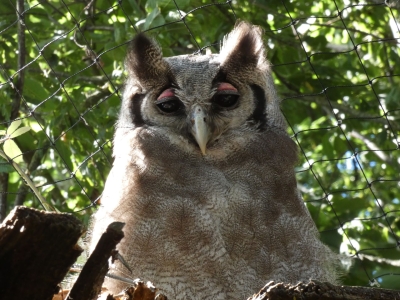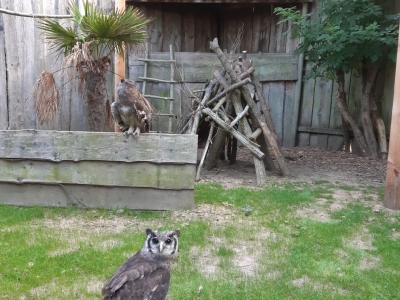Verreaux's eagle-owl Ketupa lacteus
Animals in our sanctuary
Statler
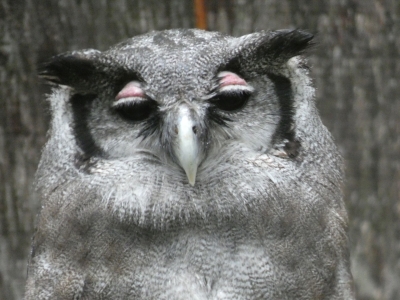
Statler, together with Waldorf and an American eagle owl, were confiscated from private individuals who kept them illegally. After a short stay at VOC Oostende, they can now fly around to their heart's content in their modified aviary in De Zonnegloed.
Waldorf
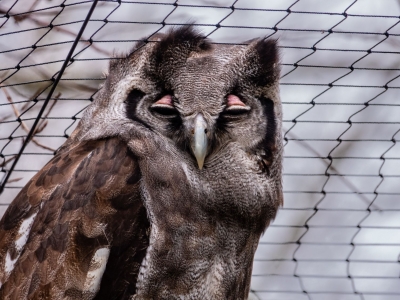
Waldorf, together with Statler and an American eagle owl, were confiscated from private individuals who kept them illegally. After a short stay at VOC Oostende, they can now fly around to their heart's content in their modified aviary in De Zonnegloed.
Where does it feel at its best?
The Verreaux's eagle-owl is found everywhere in Sub-Saharan Africa, although it is less frequently spotted in the western part of the continent. This is due to the fact that this species is less fond of rainforests and prefers savannahs, lightly wooded areas, riversides and more arid areas such as semi-deserts. They are also less likely to be seen in mountainous areas.
What does it like to eat?
The Verreaux's eagle-owl is a real opportunist and will eat anything it can get its claws on. They hunt insects, hedgehogs, hares and rabbits, rats, mice, bats, various types of birds (including other birds of prey!), snakes, mole rats, small hoofed animals and even some smaller monkey species such as galagos and grivets. Even the young of larger mammals such as warthogs and Cape baboons sometimes fall prey to this big owl.
MORE INFO
Appearance
The Verreaux's eagle-owl is the largest species of owl found in Africa. From head to tail they can reach a size of 66 cm, with a wingspan of 1m40. As with all owl species, the female is larger than the male. Especially in this species, this difference can be very pronounced: the female can be a third larger than her partner. Of course, the weights are also very different: females can weigh up to 3 kg, males about 2 kg. That does not seem much for their size, but their bulk is mostly made up from feathers. After all, a bird shouldn't be too heavy to fly.
The pink eyelids are typical for this species. No other owl has this characteristic! Their eyes themselves are black, which indicates that they are mainly active at night.
Interesting facts
They have a very deep voice, one of the deepest of all birds. This ensures that the sound travels far, especially in the openness of savannahs. It can be heard up to 5 kilometres away!
They are quite brave and do not even flinch from a rhino or lion.
Reproduction in the wild
Depending on where in Africa the owl is located, the Verreaux's eagle-owl starts breeding between November and January. Like most other owls, the Verreaux will not build their own nest, but will use those of other birds. Often these are nests of other birds (of prey).
The average number of eggs per lay is only two. They are completely white in colour. After 33 to 39 days, the chicks hatch. The second egg often hatches later, so the first chick is already much bigger. This also means that usually the second chick doesn't live for very long due to competition with its bigger sibling.
The chick starts its flying lessons at about two months, but the bird is often only capable of hunting for itself at five months. Some of them stay with their parents for more than a year, even though a little brother or sister is already growing up in the nest.
Between three and four years of age, they are considered fully grown.
Threats
The Verreaux's eagle-owl is "Least Concern". As an apex predator, they have little to fear outside of humans. Like many birds of prey, they often ingest pesticides through their prey, but they are also sometimes hunted because they are seen (often unfounded) as a threat to livestock. And, of course, their habitat is being increasingly destroyed. Locally, they may become extinct, but as they are found over almost all of Africa, there is no risk of complete extinction for the time being
Adopt this Verreaux's eagle-owl


